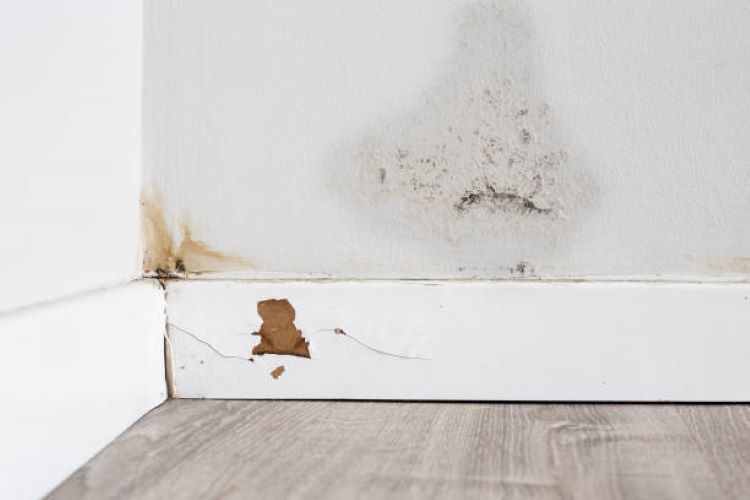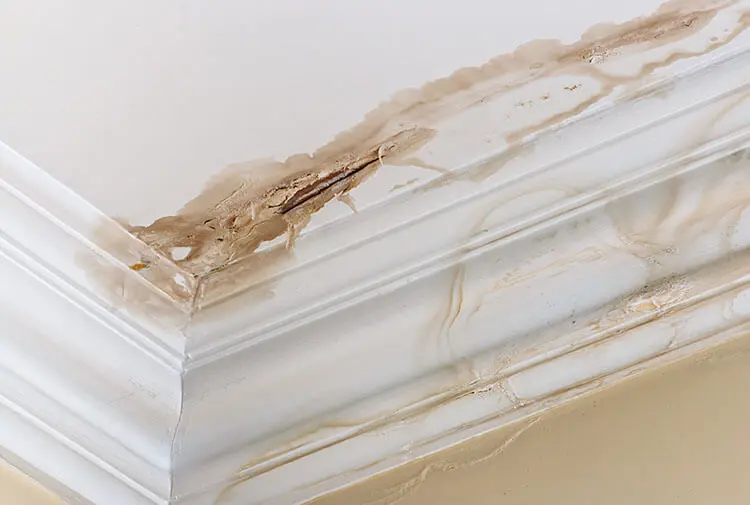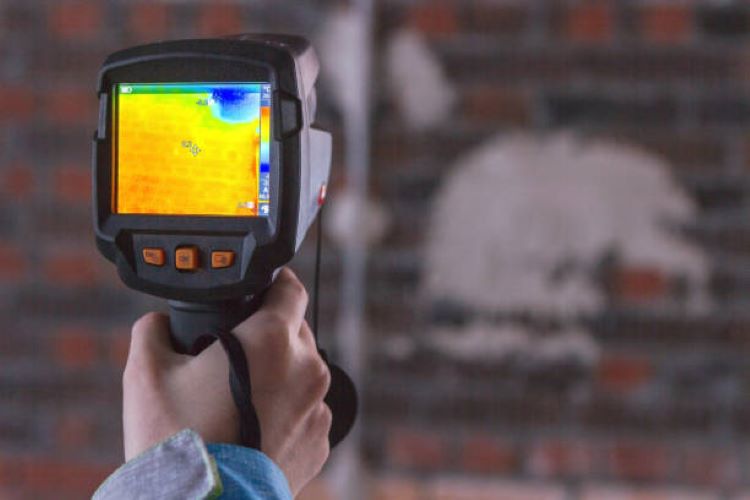Leak Behind the Wall? Here's What Every Homeowner Needs to Know
Your local plumber explains the dangers of a hidden leak behind your walls and how to prevent and repair.

Hidden leaks behind walls can lead to significant damage if not addressed promptly. These leaks often go unnoticed until they have caused extensive water damage, structural issues, or mould growth. Identifying and dealing with a plumbing leak early can save you from costly repairs and protect the integrity of your home.
Identifying a potential plumbing leak early on can prevent serious damage to your property and help save you money.
A leak behind the wall is a type of plumbing leak that occurs within the wall cavity, making it difficult to detect until significant damage has already occurred. Unlike visible leaks, which are easily spotted, hidden leaks are concealed behind walls, often making them a silent threat to your home. These leaks can cause persistent moisture issues that lead to structural damage, mould growth, and other serious problems if not addressed promptly.
Causes of Plumbing Leaks Behind the Wall
Over time, pipes can deteriorate due to factors such as corrosion, physical impact, or wear and tear. When pipes within the walls become damaged, they may begin to leak unnoticed, allowing water to seep into the surrounding materials.
Faulty or improper plumbing installations can also lead to plumbing leaks. Issues such as loose fittings, joint failures, or incorrect pipe alignment can create opportunities for hidden leaks.
Sometimes, high humidity levels can cause condensation inside walls, leading to moisture accumulation. Over time, this moisture can weaken pipes or cause small leaks to develop, contributing to plumbing leaks behind walls.
How Can I Tell if There's a Leak Behind My Wall?
Detecting a hidden leak behind your wall can be challenging, as these leaks often remain concealed until they cause noticeable damage. However, several telltale signs can alert you to the presence of a hidden leak. By being attentive to visual indicators such as wall stains and peeling paint, as well as other clues like a musty odour, changes in water pressure, or an unexplained increase in your water bills, you can identify potential leaks early and take action to prevent further damage.
Wall Stains
Discolouration or stains on walls can be a clear sign of a hidden leak. When water leaks behind the wall, it can seep through and cause visible marks on the wall surface. These stains often appear as yellowish or brownish patches, and they may spread over time if the leak is not addressed.


Peeling Paint or Wallpaper
Moisture behind the wall can lead to the deterioration of paint or wallpaper. You might notice that paint is bubbling, peeling, or cracking or that wallpaper is starting to lift away from the wall. These changes occur as moisture disrupts the adhesive and the integrity of the wall coverings.
Musty Odor
A persistent musty smell in a room can indicate mould and mildew growth due to hidden moisture. When moisture accumulates behind walls, it creates a damp environment that fosters mould growth, which can produce a distinctive, unpleasant odour.
Changes in Water Pressure
Fluctuations in water pressure throughout the home may suggest the presence of a hidden leak. When a leak occurs, it can disrupt the normal flow of water through the plumbing system, leading to irregularities in water pressure.
Unexplained Increase in Water Bills
An unexpected rise in water bills can be a red flag for a hidden leak. If your water consumption has not changed but your bills are increasing, it may be due to water continuously leaking behind walls and going unnoticed.
The Potential Damage from Hidden Leaks
Prolonged exposure to moisture from hidden leaks can severely compromise wall integrity. When walls are continually damp, the building materials begin to weaken, leading to structural damage. This degradation can progressively affect the overall stability of the property, making it vulnerable to more significant issues. Over time, the structural integrity of the walls may be compromised, necessitating costly and extensive repairs.
The presence of mould and mildew as a result of hidden leaks introduces serious health risks. Mold growth thrives in moist environments and can lead to various respiratory issues, such as allergies, asthma, and other breathing difficulties. Mold spores can easily become airborne, spreading throughout the property and posing a threat to anyone living or working there. Addressing mould is essential to safeguarding health and preventing further complications.
Ignoring hidden leaks can lead to substantial repair costs. As water damage progresses, the extent of the damage increases, resulting in more extensive and expensive repairs. Early detection and prompt repair of leaks are crucial to minimising potential damage and avoiding higher costs. By addressing any plumbing leaks early, property owners can prevent significant financial burdens and mitigate long-term damage to their property.


How to Detect a Hidden Leak?
Homeowners looking to identify hidden leaks can look for signs, such as discolouration on walls or ceilings and damp spots, to suggest a leak. Listening for dripping or running water sounds behind walls can also suggest hidden plumbing leaks.
It’s important for homeowners to take action before small issues become big problems. Regular inspections, both self-conducted and professional, are key to catching potential leaks early. If you suspect a leak or want to ensure your plumbing system is in good shape, consider scheduling a professional plumbing inspection. Plumbers will use moisture detection tools, such as moisture meters, infrared cameras, and(or) acoustic sensors, can be used to detect water flow and thermal imaging to identify moisture patterns.
Additionally, installing a smart leak detection system can provide peace of mind by offering early warnings of any potential leaks, helping you avoid extensive damage and costly repairs in the future.


What Should I Do if I Have a Leak Behind a Wall?
When dealing with leaks, especially those that are hidden or difficult to access, the importance of professional repairs cannot be overstated. While minor plumbing leaks might be manageable with DIY solutions, more complex and hidden leaks often demand the expertise and precision that only a professional plumber can provide. These leaks, located behind walls, under floors, or within ceilings, pose significant challenges for homeowners.
Professional plumbers are equipped with advanced tools and technology that allow them to accurately diagnose and repair leaks. Moreover, experienced plumbers are trained to handle the complexities of plumbing systems, which can involve working with complex networks of pipes, valves, and fixtures. Their expertise ensures that the repair is done correctly the first time, preventing recurring issues and further damage. In addition to their technical skills, professional plumbers can assess the extent of water damage caused by a leak and recommend appropriate restoration measures.
How Do I Prevent Plumbing Leaks and Minimise Damage?
Hidden leaks can lead to significant damage and health risks if not detected and addressed promptly. Vigilance in monitoring your home’s plumbing system is essential to prevent costly repairs and maintain a safe, healthy living environment. By being proactive—regularly checking for signs of leaks, managing humidity levels, and investing in modern leak detection technology—you can protect your home from the often unseen dangers of water damage.
It’s important for homeowners to take action before small issues become big problems. Regular inspections, both self-conducted and professional, are key to catching potential leaks early. If you suspect a leak or want to ensure your plumbing system is in good shape, consider scheduling a professional plumbing inspection.
For leak detection and repair in Blue Mountains, Lithgow and Penrith, contact Ironclad Plumbing. 24/7 emergency response for the region.
Call 0474 318 136
Or fill in the form below and we’ll call you back.
